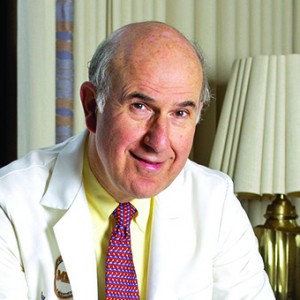
07 May Meet Dr. Gil Omenn, Director of the University of Michigan Center for Computational Medicine & Bioinformatics on June 6th at PMWC 2018 Michigan

Gil Omenn is an expert in genetics, proteomics, bioinformatics, and precision medicine. He is Distinguished University Professor of Computational Medicine & Bioinformatics, Internal Medicine, Human Genetics, and Public Health, and Director of the University-wide Center for Computational Medicine & Bioinformatics at the University of Michigan. He is a former Howard Hughes Medical Institute Investigator, a longtime NCI-funded PI, a physician long involved in Genetic Counseling at the University of Washington and University of Michigan, and the first CEO of the University of Michigan Health System. Read his full bio.
PMWC 2018 Michigan taking place June 6-7, 2018.
Q&A with Gil Omenn, University of Michigan
Q: What are the objectives of the Human Proteome Project and what are some of the recent breakthrough discoveries?
A: The HUPO Human Proteome Project has two overarching goals: (1) to complete the protein parts list, with at least one protein product from each of the ~20,000 protein-coding genes along with sequence variants, splice variants, and post-translational modifications, with characterization of their functions; and (2) to make proteomics a full partner of genomics, transcriptomics, epigenomics, and metabolomics in pan-omics molecular studies of health and disease.
Successes of the Human Proteome Project include (1) creation of ProteomeXchange to collect proteomics datasets and the full description of the sample and methods (meta-data), with links to PeptideAtlas for reanalysis of the MS/MS raw data with a standardized TransProteomicPipeline across all datasets; (2) implementation of quality assurance Guidelines for Interpretation of Mass Spectrometry Data widely used in the field; (3) documentation of progress on the Human Proteome around the globe with the HPP annual metrics and the gold standard of neXtProt curation, showing growth from 13,000 credible protein identifications in 2013 to 17,470 in 2018, representing 89% of the predicted human proteins (neXtProt categories PE1-4); (4) development of the field of targeted proteomics with the public availability of the SRM Atlas, with spectra for unique peptides of all of the~20,000 coded proteins; and (5) numerous in-depth studies of the proteins and variant proteins associated with diseases of nearly all human organs.
Q: You were the first to recognize the need for integrated approach to computational medicine and bioinformatics. Why is it so critical?
A: In 2007 we created the University of Michigan-wide Center for Computational Medicine and Bioinformatics and our NIH-funded National Center for Integrative Biomedical Informatics. All of biology and medicine is becoming more quantitative and more dependent upon computational algorithms and models to understand changes in pathways and networks of cells and organs critical for health and disease. Genomics, proteomics, brain studies, and clinical records require advanced computational methods to analyze and model “big data”.
Q: What are the key scientific areas that still need to be developed so that precision medicine can be implemented effectively in community setting?
A: At this point, “precision medicine” is still aspirational; much more must be learned about the individual differences among patients in the causation and progression of disease and the most effective interventions to prevent or treat the disease. We are fast accumulating “dense, dynamic, personal data clouds” for individuals, yet we must understand the dynamics of pathways, networks, gene modifiers, social and environmental exposures, and human behaviors in determining the “phenotype”, the distinctive features in each person/each patient.
Q: Can you please reflect on the “Paths Less Travel’d” choices you have made throughout your career?
A: Ah, this question is a reference to my Distinguished University Professor Lecture of 2016. Following my curiosity and sense of opportunity, I pursued biochemical genetic studies of the brain, when the brain was perceived as much too difficult for such projects; interactions between genes and risky environmental exposures (“eco-genetics”) instead of just the toxicities of environmental chemicals; proteins and proteomics when many colleagues were absorbed with genes and transcripts (DNA/RNA) alone; and a commitment to link basic science with clinical applications and to combine science and policy of individual patient care with health promotion and disease prevention for whole populations.






